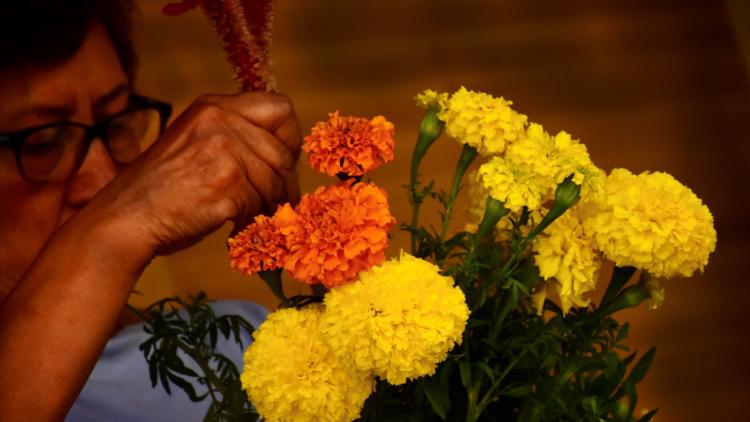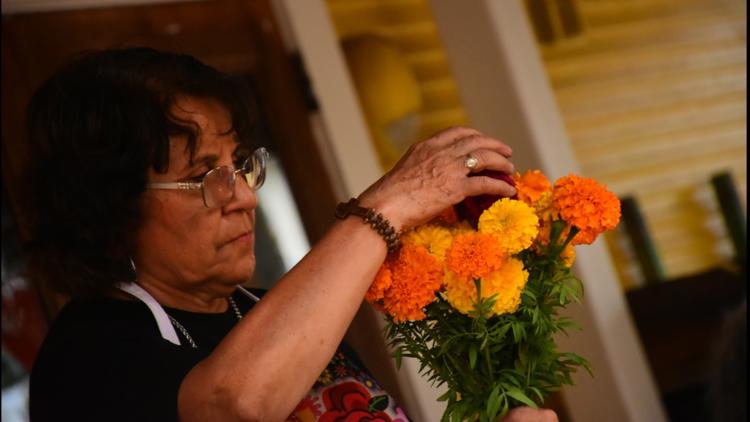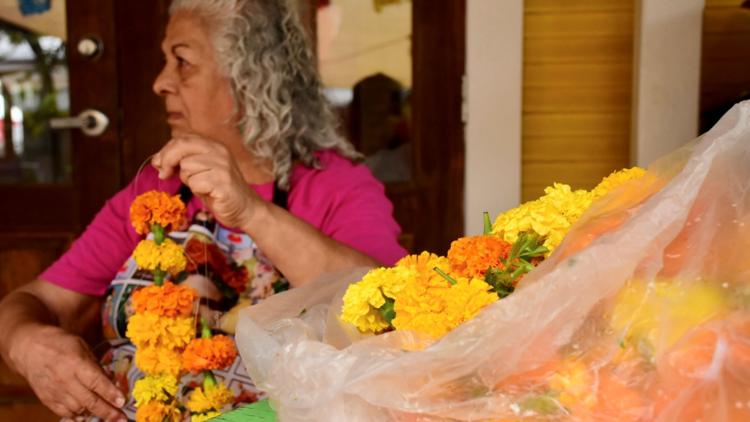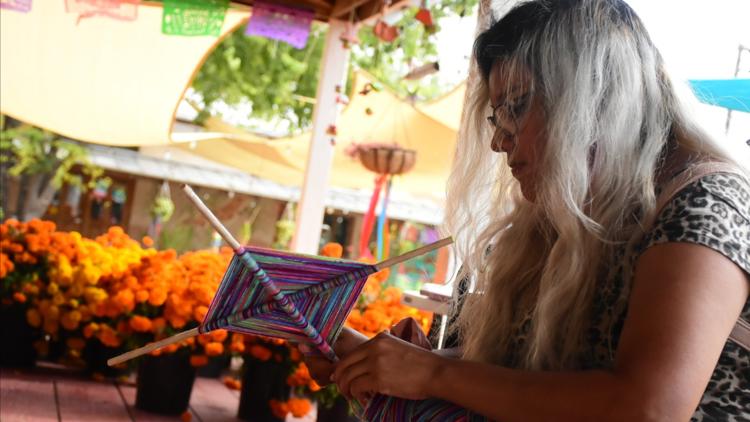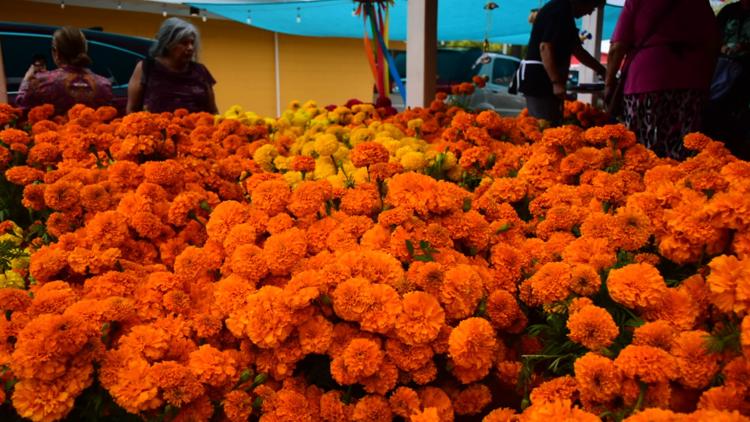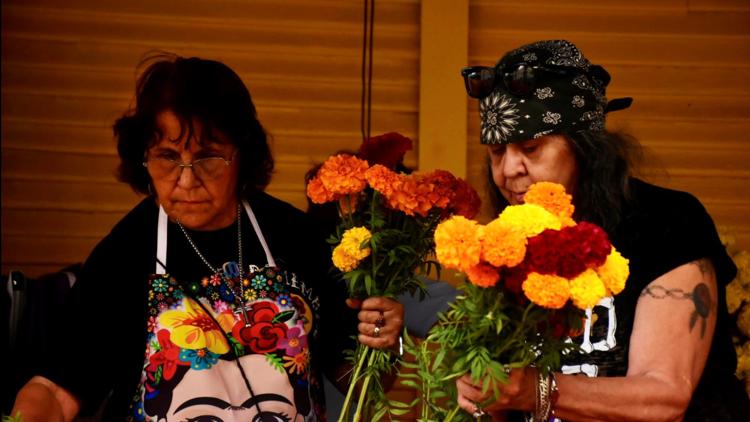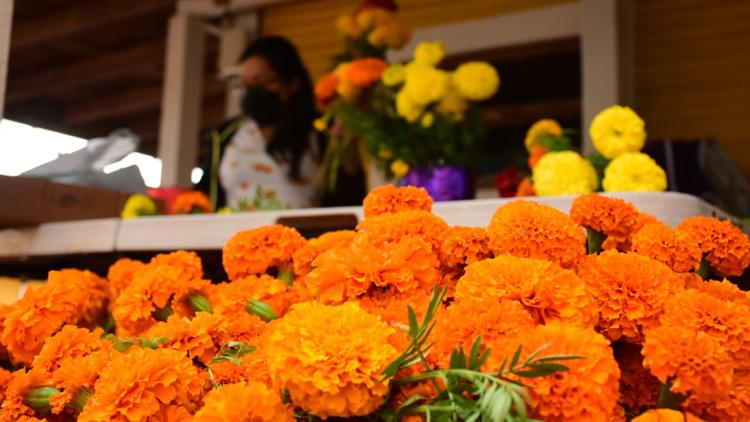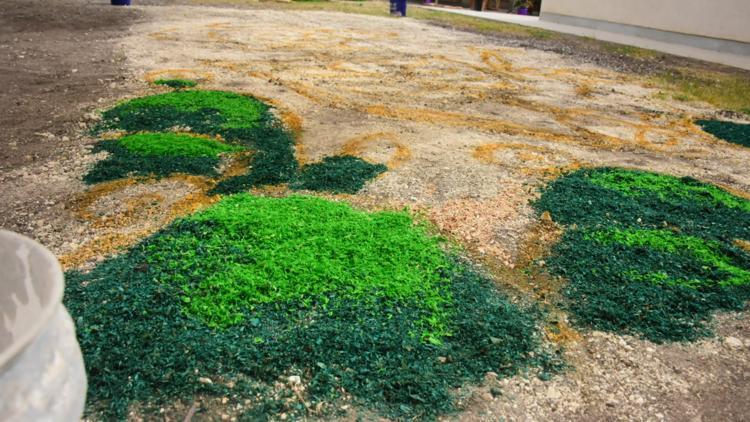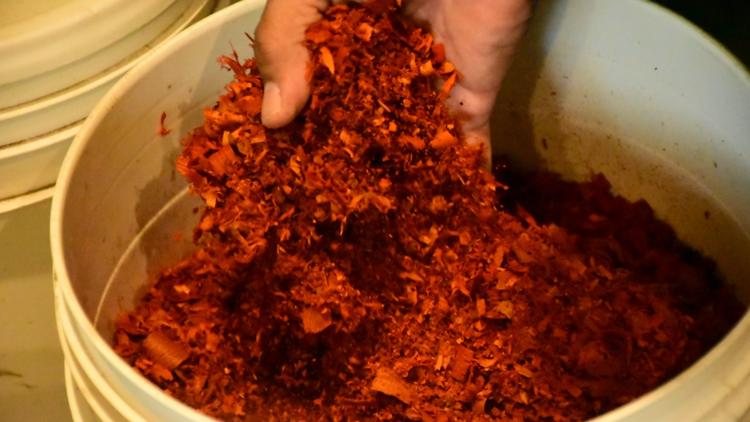SAN ANTONIO — Even as the sun briefly retreated and clouds prepared to open up on San Antonio’s historic west side Wednesday afternoon, if you were at Rinconcito de Esperanza, you wouldn’t have noticed the rain until it hit you on the head.
The hundreds and hundreds of blindingly orange marigolds lining the porch of Esperanza's repurposed cultural center at Guadalupe and South Colorado would've prevented you from ever thinking the sunshine was gone.
Most importantly, the spotty rain didn’t slow down the volunteers, neighbors, and friends and family who gathered here Wednesday to prepare for the Esperanza Peace and Justice Center’s own Día de los Muertos festivities. For them, these preparations – which included turning 40 stuffed buckets of those bright marigolds into hand-crafted bouquets – don’t amount to work so much as building community.
“It’s what we call in Spanish convivir—to live together, work together,” said 51-year-old Susana Segura, one of the event’s primary organizers this year. “As people are working, they’re telling their stories and their memories. They’re remembering past Día de los Muertos or remembering others who have passed.”
Esperanza’s Día de los Muertos celebration officially kicks off at 5 p.m. Friday, with the sounds of young accordion and bajo sexto players from the Conjunto Heritage Taller school. But the meaning of the Mexican holiday took root on this day, when volunteers came together to share in their customs—from the altars and music to the marigolds, or cempasuchil, the iconic flower that helps guide loved ones back to the land of the living.

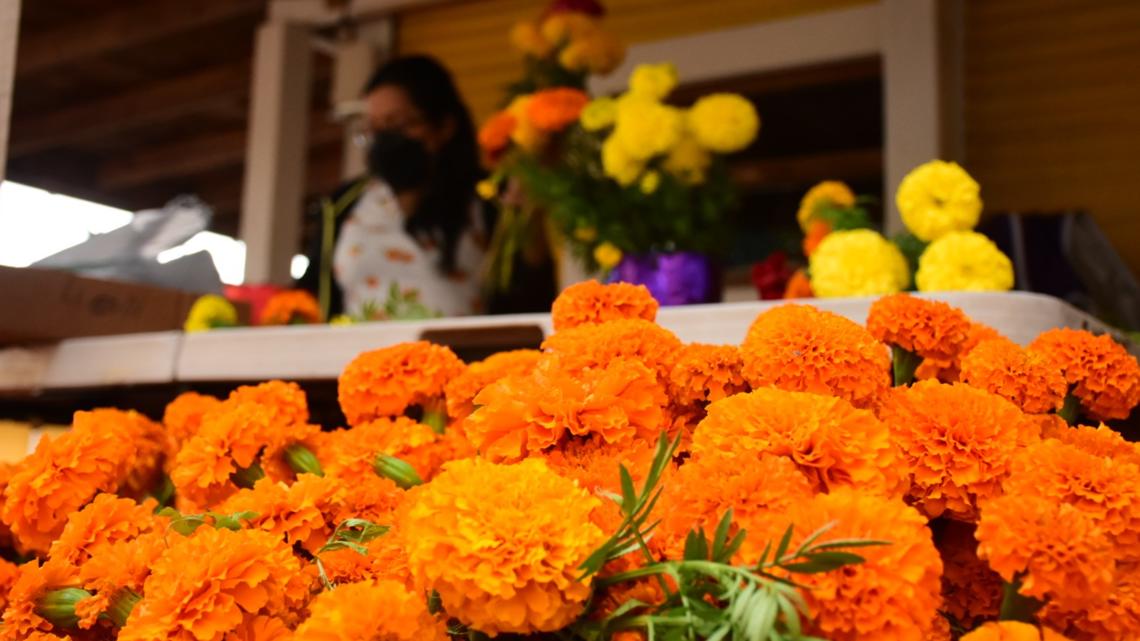
The conversations, laughter and learning is in line with Esperanza’s mission of fostering “cross-cultural understanding” in San Antonio, breaking down sociocultural barriers in the process.
“(It’s about) keeping up tradition,” said Bernard Sanchez, a San Antonio native who saw for himself the potential of a large-scale Día de los Muertos celebration in Guatemala nearly two decades ago, and brought the idea back to Esperanza. “We teach people and hopefully we don’t lose tradition.”
On this day – with about 54 hours to go until Friday’s fiesta – Sanchez was reviewing a sizeable area on the Rinconcito property where faint markings were visible. It was hard to make out what the foundation was depicting, but over the next several hours he and others would set about creating this year’s tapete, or alfombra—a mosaic of color depicting a sombrero-wearing skeleton greeting a bird.
The material?
Sawdust. Tubs and tubs and tubs of sawdust dyed into hues of red, green, white, yellow, black. As Sanchez takes a scarlet-colored scoop and lets it sift through his fingers, another carload of marigolds arrives nearby. They’re coming from Arnosky Family Farm in Blanco, nearly an hour away, and the volunteers who have gone to collect them have been up since 7 a.m.
But early wake-up calls mean little when the opportunity comes to celebrate one’s ancestors and heritage through Día de los Muertos.
“During colonization and assimilation, it morphed into what we see today. It can mean different things to everybody,” said Roza Rodarte, a volunteer whose family is from the Mexican city of Zacatecas. “To my people, it was a chance to recognize that you’re interconnected with everything. That life and death are cycles.”

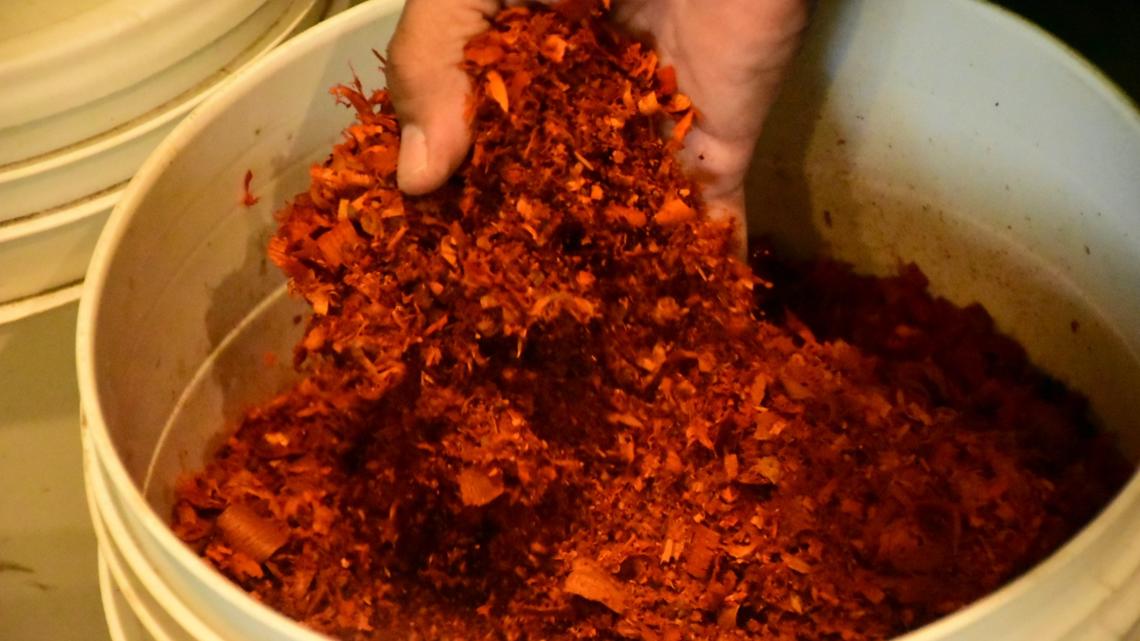

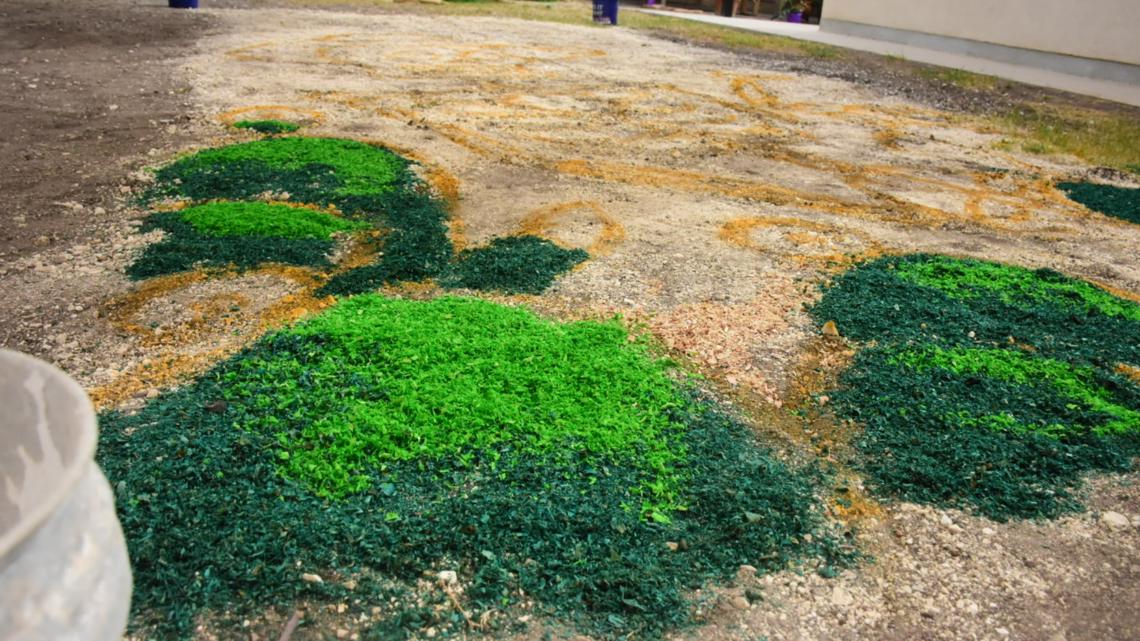
Rooted in Aztec culture and often misconstrued as being a celebration of death, Día de los Muertos instead honors the dead by keeping their memories alive through photos, music, merriment and intricate ofrendas, or altars.
Those altars are often decorated with the orange marigolds, and few in the community know how to prepare them like 73-year-old Lupe Segura, Susana’s mother. She’s led the marigold preparations for about 15 years, and on Wednesday she guided a group of women in handling the delicate flowers and making them shine even brighter.
Smiles and laughter laced her instructions.
“I’m Mexican, and this is a Mexican tradition,” said Lupe Segura, who said Esperanza’s celebration offers an intimate contrast to some bigger Día de los Muertos events that she says are “all about business,” commercializing her country’s customs and diluting the meaning.
That meaning has become even more intimate for Lupe in recent years. Two friends who guided the preparation of papel picado and other elements of the celebration have recently passed, and her husband Aldolfo died in 2022.
“Now it’s more meaningful for me,” she says. “I used to make my parents’ altar, now my husband is the first picture. He’s at front on the altar.”

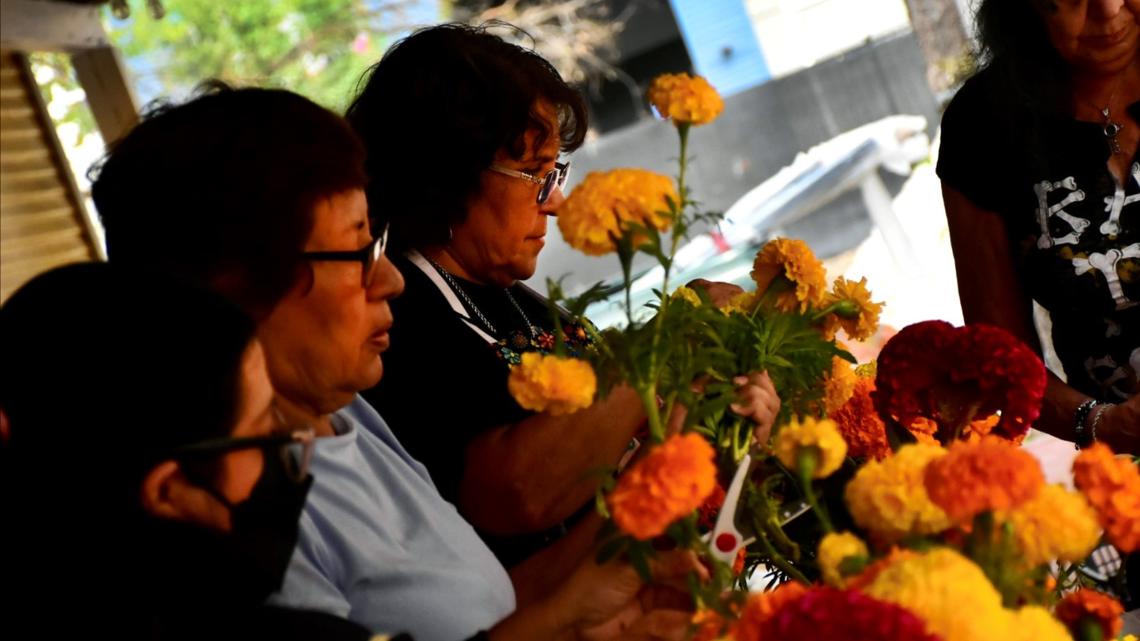
Lupe recalls visiting the local cemeteries during Día de los Muertos as a child, as does her daughter, whose favorite part of the holiday was decorating the tombstones with flowers and other organic materials.
“You can use all the colors of nature,” Susana Segura said. “That’s an early memory. We have to remember we were always here. These are native lands; the idea of being from here is very strong in this community.”
Around the corner of Rinconcito’s porch, other volunteers sat making Ojos de Dios, weaving beautiful diamonds out of yarn and sticks. It’s another tradition, this one of the Huichol people of Mexico, who lived in the 1400s and created Ojos to protect their homes and create a sense of calm.
Calm is what they were bringing Devona Rodriguez, a west-side resident who said volunteering with Esperanza has helped her find her path forward after a brain injury she suffered in an accident.

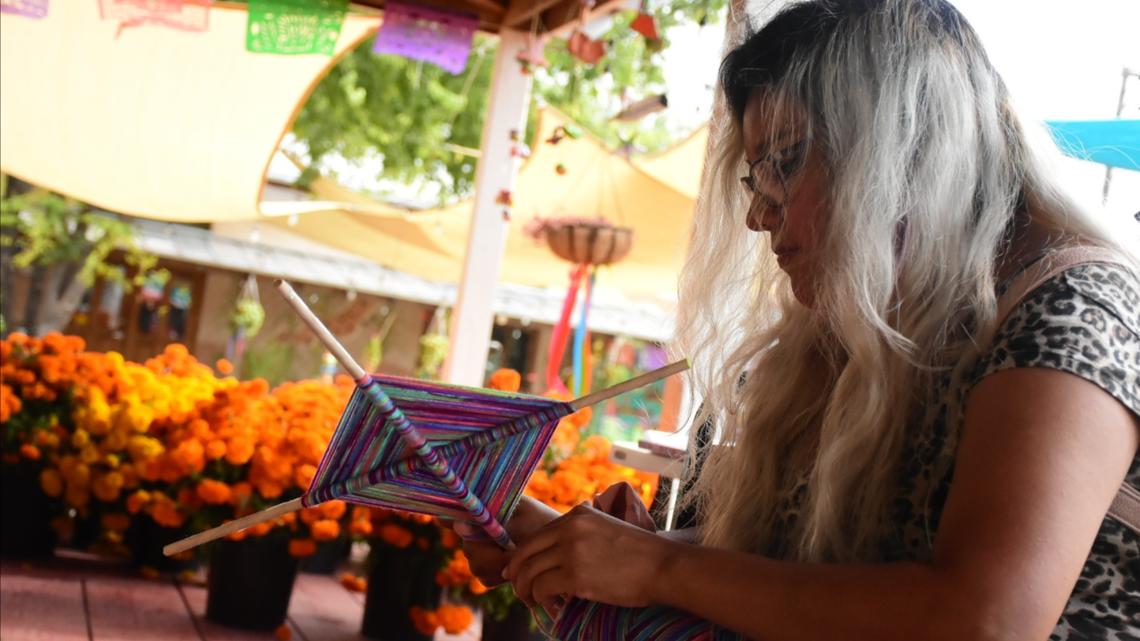
“It’s peaceful,” she said. “It feels like all of us are unique here. All of us are thoughtful, all of us are creative. I just like that you get to be you, that you get to do something beautiful for others.”
“We’re trying to bring tradition back into our community,” Susana Segura added. “We have a huge number of folks who are already practicing this tradition at their home, but we want to encourage them to come out and show others how to do what they know how to do.”
And on Friday, the Rinconcito (816 S. Colorado St.) is welcoming others from across San Antonio to its free celebration, which will include a procession through the west side led by indigenous drummers, free food, face painting and an opportunity to buy products made by Esperanza’s MujerArtes cooperative. For those who can’t attend, the ofrendas will remain on view until Nov. 8, and visitors will also be able to pursue the newly renovated Museo del Westside at the property.
One thing San Antonians will notice if they visit Friday: No marigold goes unused here. No sooner had one of the flowers fallen off a bucket being offloaded from a car then someone said, “Grab that!” Even the dirty cempasuchils end up in a plastic bag to be repurposed, either laced through with string for hanging decorations or lining the walkway to welcome visitors.
And their loved ones who have died.


